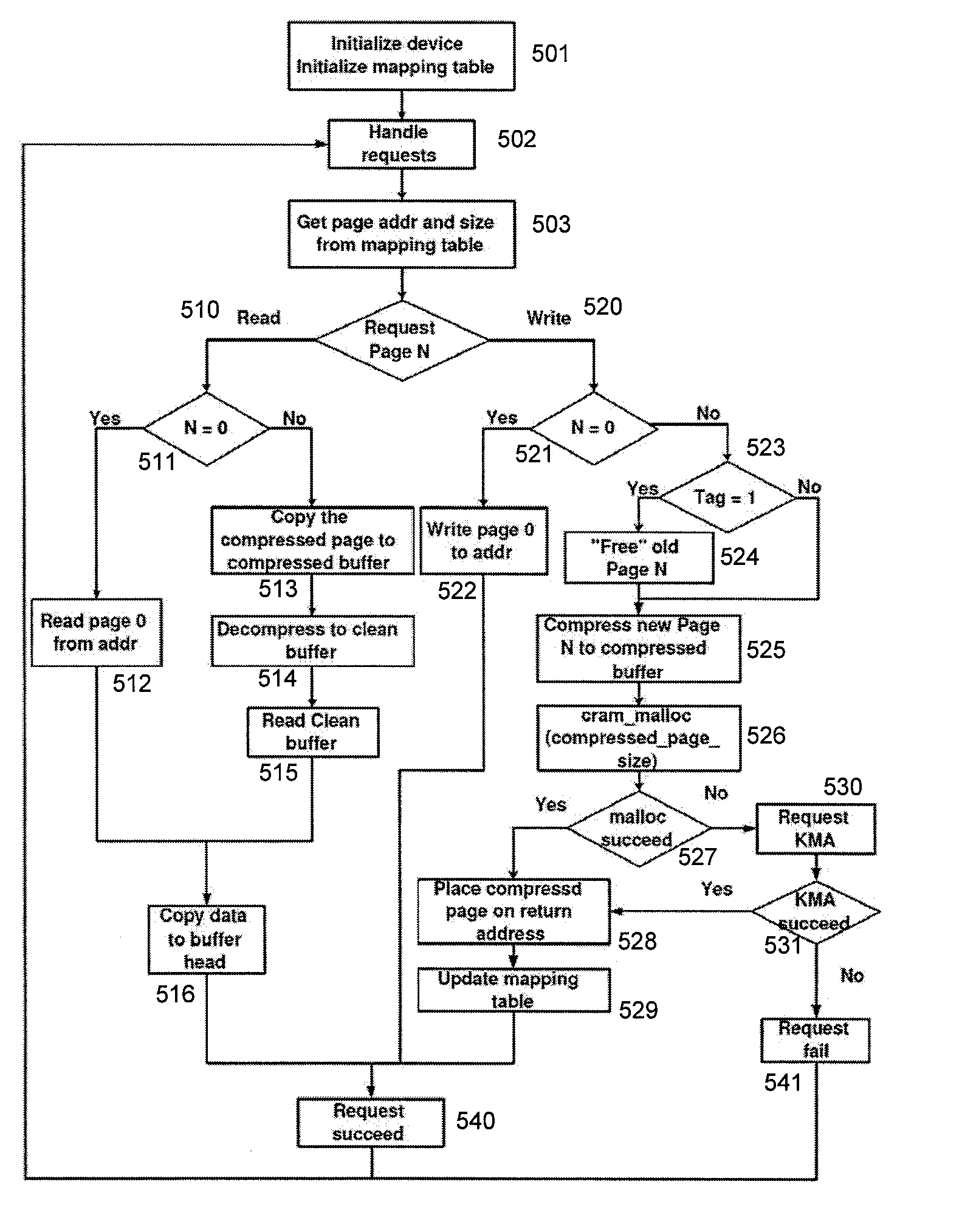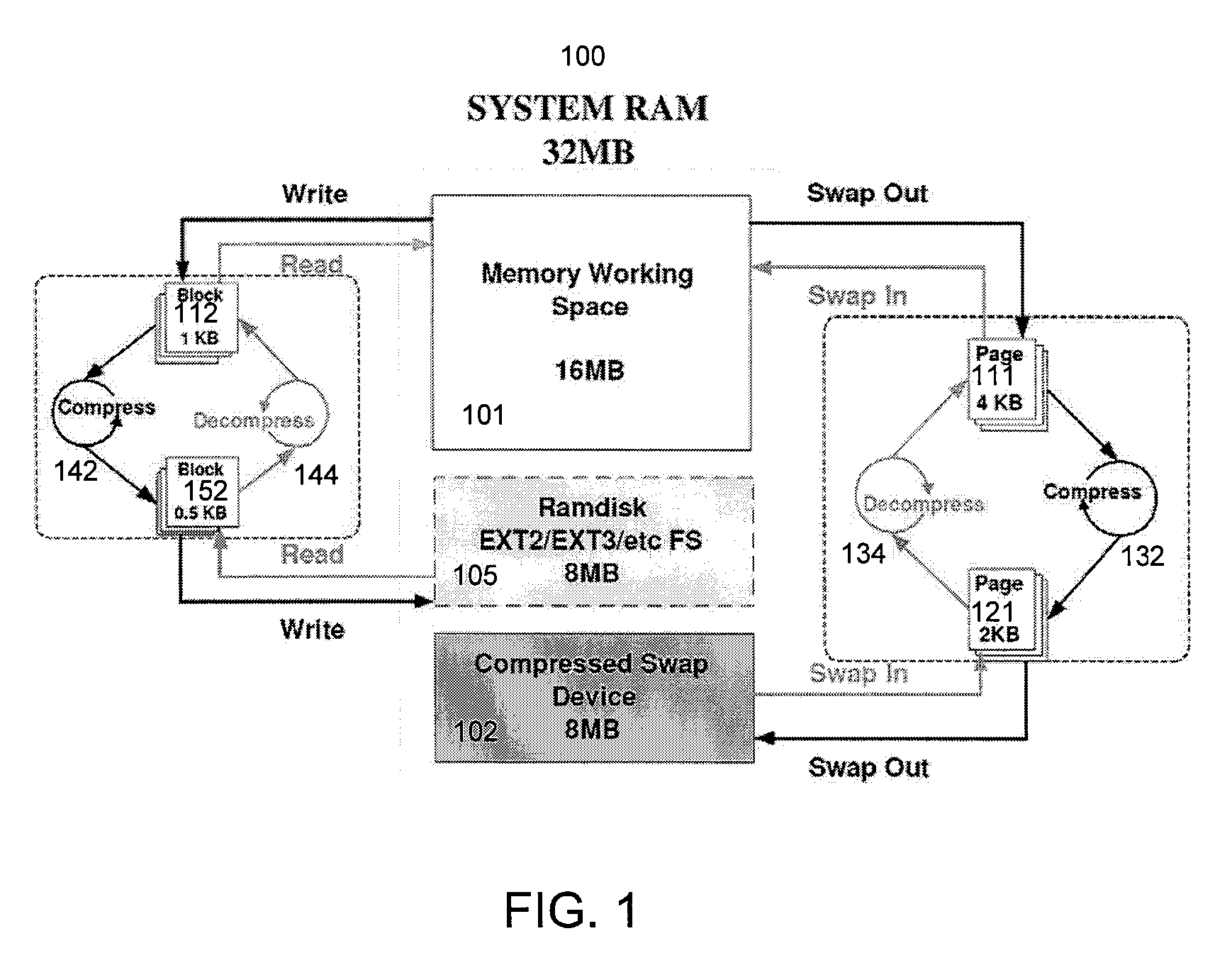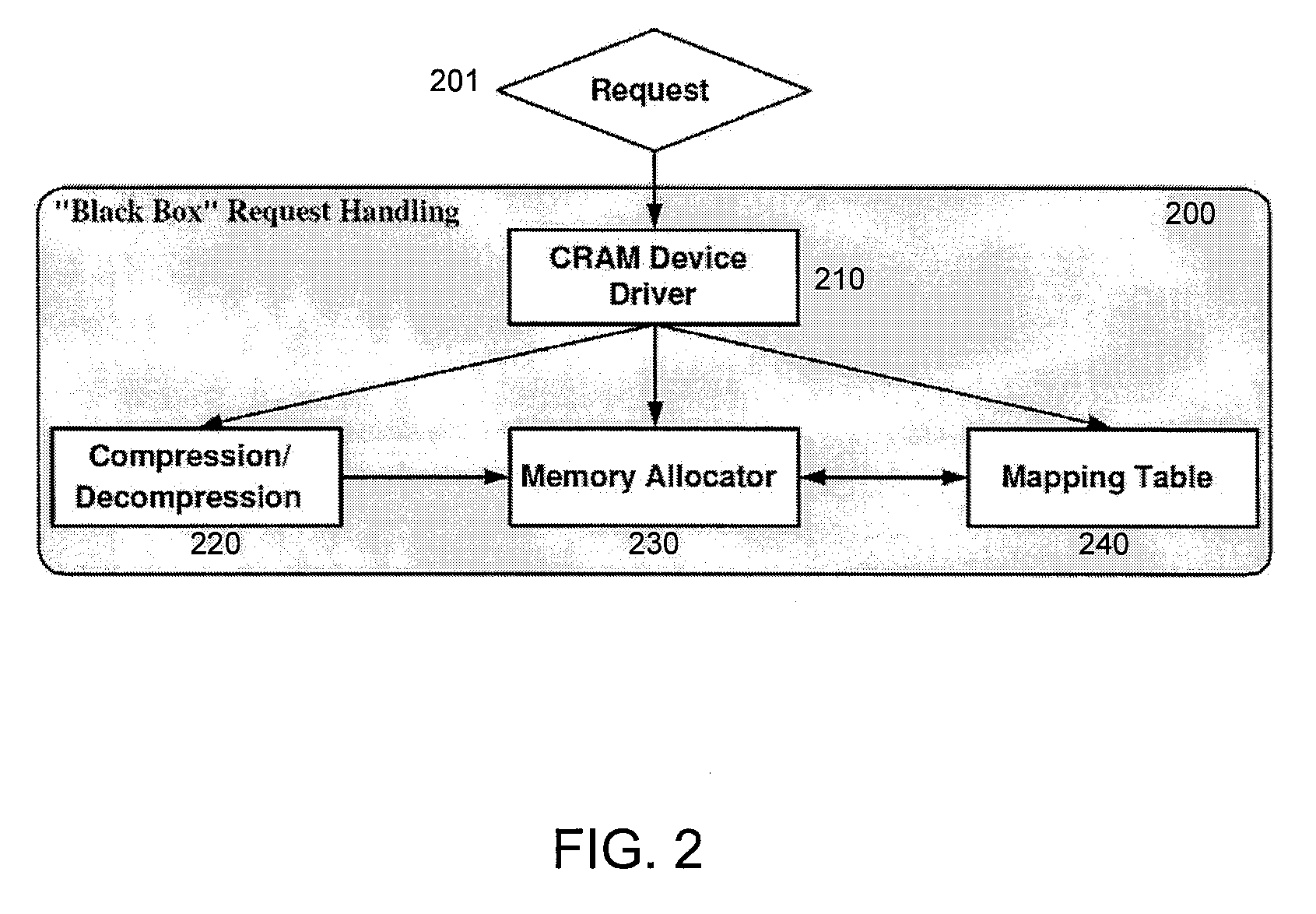Operating System-Based Memory Compression for Embedded Systems
a technology of embedded systems and memory compression, applied in the field of memory compression architectures for embedded systems, can solve the problems of large working data sets, overestimation of system memory requirements, strict constraints on size, weight and power consumption of embedded systems, etc., and achieve the effect of avoiding fragmentation and utilizing memory resources
- Summary
- Abstract
- Description
- Claims
- Application Information
AI Technical Summary
Benefits of technology
Problems solved by technology
Method used
Image
Examples
Embodiment Construction
[0016]FIG. 1 is an abstract diagram illustrating the operation of the disclosed memory compression architecture in an example embedded system. The embedded system preferably has a memory management unit (MMU) and is preferably diskless, as further discussed herein.
[0017] As depicted in FIG. 1, the main memory 100 of the embedded system is divided into a portion 101 containing uncompressed data and code pages, referred to herein as the main memory working area, and a portion 102 containing compressed pages. Consider the scenario where the address space of one or more memory intensive processes increases dramatically and exceeds the size of physical memory. A conventional embedded system would have little alternative but to kill the process if it had no hard disk to which it could swap out pages to provide more memory. As further discussed herein, the operating system of the embedded system is modified to dynamically choose some of the pages 111 in the main memory working area 101, c...
PUM
 Login to View More
Login to View More Abstract
Description
Claims
Application Information
 Login to View More
Login to View More - R&D
- Intellectual Property
- Life Sciences
- Materials
- Tech Scout
- Unparalleled Data Quality
- Higher Quality Content
- 60% Fewer Hallucinations
Browse by: Latest US Patents, China's latest patents, Technical Efficacy Thesaurus, Application Domain, Technology Topic, Popular Technical Reports.
© 2025 PatSnap. All rights reserved.Legal|Privacy policy|Modern Slavery Act Transparency Statement|Sitemap|About US| Contact US: help@patsnap.com



